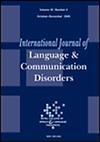The Effect of Genotype on Self-Reported Dysarthria and Dysphagia in Parkinson's Disease: A Parkinson's Progression Marker Initiative Study
Abstract
Objectives
The objective of this study was to examine baseline and longitudinal differences of self-reported dysarthria and dysphagia in the most common genetic subtypes of Parkinson's disease (PD) using the Parkinson's Progression Marker Initiative (PPMI) dataset.
Methods
This was a retrospective, longitudinal study utilizing data from the PPMI dataset. Dysarthria- and dysphagia-specific questions from the Unified Parkinson's Disease Rating Scale (UPDRS) and Scales of Outcomes in Parkinson's Disease-Autonomic questionnaire (SCOPA-AUT) were extracted for people with Parkinson's disease (PwPD) with leucine-rich repeat kinase 2 gene (LRRK2), GBA, and SNCA genotypes across up to five research visits. Relevant patient (age, sex, etc.) and disease (severity, phenotype, medication, etc.) data were extracted along with scores from the Montreal Cognitive Assessment (MoCA). Linear mixed models (LMMs) were used to analyse longitudinal data between genotypes, as well as to examine the interaction effects between genotypes and tremor dominant (TD) or postural instability/gait determinant (PIGD) phenotypes.
Results
A total of 211 PwPD met inclusion criteria at their baseline visit (LRRK2 n = 115, GBA n = 68, SNCA n = 15). LMMs displayed significant differences in genotypes longitudinally, with significant differences between LRRK2, GBA, and SNCA genotypes at multiple time points in dysarthria and dysphagia self-reports. LRRK2-genotyped participants routinely self-reported lower dysarthria (p < 0.001) and dysphagia severity for UPDRS (p < 0.001) and SCOPA-AUT (p = 0.007) questions. SNCA-genotyped participants self-reported the most severe dysarthria (p = 0.002) and dysphagia symptoms for UPDRS (p < 0.001) and SCOPA-AUT (p < 0.05) over time. There were no differences between genotypes at baseline, and no effects of motor phenotype at any time point.
Conclusions
This was the first study to examine longitudinally how genotypes in PD specifically impact self-reported dysarthria and dysphagia severity. Findings from our study suggest different genotypes of PD affect the degree of self-reporting dysarthria and dysphagia severity. Specifically, LRRK2 genotypes self-reported lower dysarthria and dysphagia severity, while SNCA genotypes self-reported the most severe dysarthria and dysphagia of this sample. Importantly, SNCA genotypes self-report a faster increase in severity over time compared to other genotypes. Substantially more work is needed to investigate the underlying physiological differences manifesting in dysarthria and dysphagia in different genotypes of PD.
WHAT THIS PAPER ADDS
- Limited evidence is available regarding the effects that different genotypes of Parkinson's disease (PD) have on speech, voice, and swallowing. Current evidence suggests differences in voice acoustic signals between idiopathic and genetic Parkinson's, but with no other evidence in other domains such as swallowing. Additionally, there is no current data on how different genotypes perceive or report speech, voice, or swallowing impairment.
- This study adds novel, preliminary evidence from a large open-source dataset that different genotypes of PD may report differential impairment in speech, voice, and swallowing. Importantly, the progression of reported dysarthria and dysphagia over time interacts with these genotypes, suggesting different genotypes experience differential impairment in dysarthria and dysphagia as time goes on. Specifically, SNCA-genotyped people with PD may report significantly greater dysarthria and dysphagia than other genotypes.
- Clinically, this study highlights how different genotypes of PD experience dysarthria and dysphagia over the course of their disease and provides potentially relevant timelines of when these impairments reach clinically meaningful thresholds. As an example, baseline reports of dysarthria and dysphagia were similar and remained stable up to the third year of reports, where significant differences between genotypes began to emerge. This may provide clinicians with useful information regarding when to expect dysarthria and dysphagia in genotypic PD to manifest and when to best initiate additional assessment and treatment based on patient information.


 求助内容:
求助内容: 应助结果提醒方式:
应助结果提醒方式:


